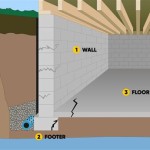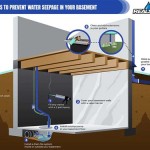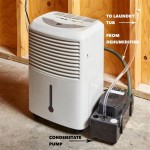Essential Aspects of Waterproof Paint for Basement
Waterproofing your basement is crucial for protecting your home from moisture damage, mold growth, and structural issues. Waterproof paint is a highly effective solution that forms a barrier against water penetration and safeguards your basement from the elements. Here are some essential aspects to consider when choosing and applying waterproof paint for your basement: ### Types of Waterproof Paint1. Epoxy-Based Paint:
Epoxy-based paints create a tough, durable, and watertight seal. They are resistant to acids, chemicals, and abrasion, making them ideal for high-traffic areas or commercial applications.2. Polyurethane-Based Paint:
Polyurethane-based paints offer excellent adhesion, flexibility, and resistance to moisture. They are suitable for both interior and exterior surfaces and can withstand harsh weather conditions.3. Cementitious-Based Paint:
Cementitious-based paints are made from cement and other fillers. They create a breathable, porous barrier that allows moisture to escape while preventing water from penetrating. ### Characteristics to Look For1. Waterproofing Ability:
Choose paints with a high Waterproofing Rating (WPM), indicating their resistance to water penetration.2. Breathability:
Waterproofing paints should allow moisture vapor to escape, preventing condensation and mold growth. Look for paints with a Vapor Permeability Rating (VP) that allows sufficient breathability.3. Adhesion:
Good adhesion is essential for the paint to bond to your basement walls and create a watertight seal. Ensure the paint has excellent adhesion properties and is compatible with the surface you're applying it to. ### Surface Preparation1. Cleaning:
Thoroughly clean the basement walls to remove dirt, dust, and grease. This ensures the paint adheres properly.2. Repair Cracks:
Seal any existing cracks or holes in the walls using a waterproof sealant or hydraulic cement. This prevents water from seeping through damaged areas.3. Prime the Walls:
Applying a primer before painting improves adhesion, reduces the number of paint coats needed, and provides a uniform surface. Use a primer specifically designed for waterproofing. ### Application1. Thinning:
Follow the manufacturer's instructions for thinning the paint if necessary. Over-thinning can compromise its waterproofing properties, while under-thinning can make it difficult to apply.2. Number of Coats:
Apply two or more coats of waterproof paint, allowing each coat to dry completely before applying the next. Multiple coats enhance the watertight seal.3. Coverage:
Check the paint's coverage rate and calculate the amount needed for your basement walls. Allow for some extra paint for touch-ups or future maintenance. ### Maintenance1. Inspection:
Regularly inspect your painted basement walls for any signs of peeling, cracking, or water damage.2. Touch-ups:
Repair any damaged areas promptly to maintain the waterproof seal and prevent further moisture penetration.3. Cleaning:
Occasionally clean the painted surfaces to remove dirt and grime. Use a mild cleaner that won't damage the paint. By choosing the right waterproof paint, preparing your surfaces properly, and applying it according to the manufacturer's instructions, you can effectively protect your basement from water damage, ensuring a dry and healthy living environment for years to come.
Kilz Basement Masonry Waterproofer

The Right Wrong Way To Waterproof Your Basement Wall

Waterproof Or Waterproofing Paint For Basement Walls

Waterproofing Basement Walls With Drylok Paint Home Repair Tutor

Basement Waterproofing How It Works Costs

Waterproofing Basement Walls With Drylok Paint By Home Repair Tutor Youtube

The Complete Basement Waterproofing Guide For Homeowners

5 Steps For How To Waterproof Basement Walls From The Inside Wise Cracks

Is Waterproofing Paint A Good Idea To Protect Your House From Water Leakage

How To Waterproof Basement Walls With Flex Seal Products
See Also








